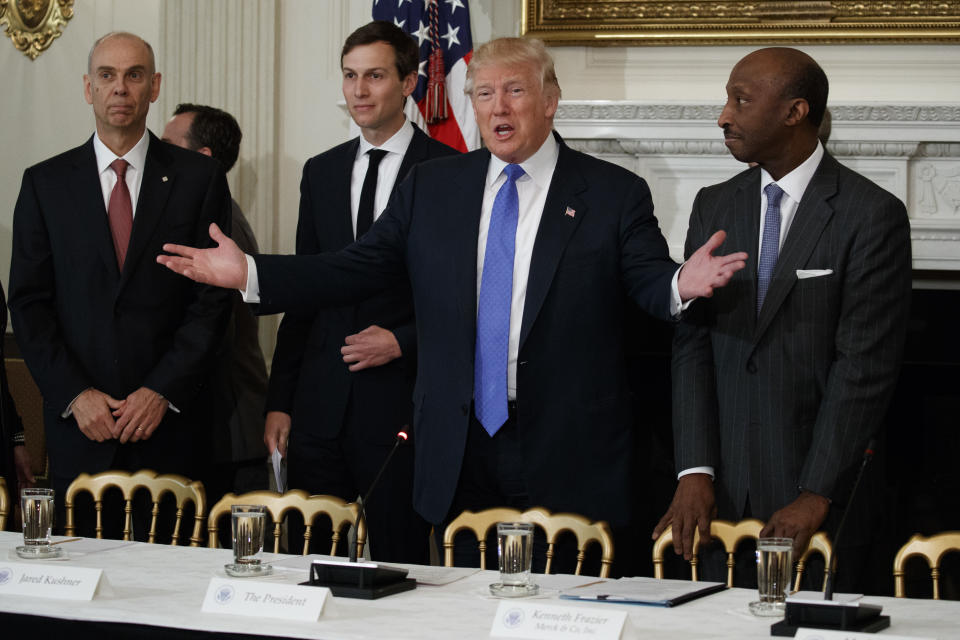Trump can't take credit for post-election stock market rally

The failure of the healthcare bill in Congress Friday seems to be putting pressure on markets as investors reassess the post-Trump election rally.
Some market analysts worry Trump’s other pro-growth promises, namely tax cuts and deregulation, may be called into question after last week’s events.
“Failure to pass the healthcare bill doesn’t mean that President Trump’s entire agenda is in tatters, but it’s a huge setback all the same and the market mood reflects as much,” according to Societe Generale strategist Kit Juckes.
And with the S&P 500 (^GSPC) up 8% since the Nov 8 election day, some fear the gains will not last.
But RBC’s Jonathan Golub says not to worry. The market is up because of a stronger economic backdrop and reflation, he said.
It’s not all about ‘the Donald’
“While stock prices jerked forward in the days following the election, the broader trend is better explained by other forces,” Golub explained. Those other forces: reflation and a cyclically stronger economy.
After all, the market was rallying long before we knew Trump would be the next president. The S&P returned 7% from late June through Election Day, accompanied by a rise in bond yields.

“Pro-growth policies might be the icing on the cake, but a strong backdrop is the cake,” Golub said. “This cannot be overstated because a market dependent on proposed initiatives alone is far more fragile that one grounded on solid economics.”
One thing Trump did have: good timing. Growth and inflation expectations began to normalize around mid-2016 and and income data began to turn higher just before Election Day, as Golub pointed out in the chart below.

And improved US economic data has been accompanied by strong global numbers with industrial readings turning upward since mid-2016.
Rising interest rates are actually good for the market
Higher interest rates are thought to be an impediment to economic growth as they reflect higher borrowing costs. However, the recent pick-up in rates should promote spending.
Much of the market’s run since the 2009 lows has been largely attributed to low interest rates. But Golub explained that the long span of ultra-low rates has damaged confidence, hurting savers and undermining spending and investment.

Meanwhile, S&P 500 revenues are closely tied to economic growth, with every 1% change in nominal GDP driving a 2½% change to companies’ top lines.
“Given the pattern of weak top-line growth over the past several years, we believe the realization of these forecasts will result in even greater investor enthusiasm,” Golub said.
Labor market contribution
A tight labor market has been among the most important factor driving inflation, rates and stocks, according to Golub.
With an 80% correlation to the consumer price index (CPI), wage inflation has been ticking up. Meanwhile, the quits rate (JOLTS) has risen, reflecting more employee confidence just as company management teams are finding it tougher to find qualified employees.

The bottom line: continued economic improvement and reflation—driven in particular by wage growth—may be important for the long-term health in the market. But short term market moves may be reactionary to political uncertainty.
“A market advance based solely on hoped-for, pro-growth policies is extremely fragile. By contrast, we see reflation and an uptick in global activity as the key catalysts behind a more robust rally,” Golub said.
Nicole Sinclair is markets correspondent at Yahoo Finance. Follow her on twitter at @nicoleusinclair
Please also see:

 Yahoo Finance
Yahoo Finance 
